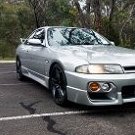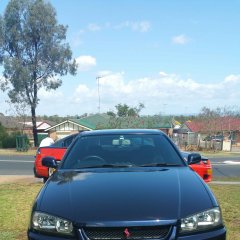Timing Belt Question?
Announcements
-
Similar Content
-
Latest Posts
-
Strength. And on the early RB26, full engagement of the pump drive.
-
By joshuaho96 · Posted
I really don't understand the point of aftermarket oil pumps if your particular engine doesn't need more oil pressure. As far as I can make sense of it the problem seems to be cavitation from sucking air, maybe the pump gear design with how it interfaces with the OEM crank, and maybe the backing plate screws wanting to loosen themselves. How does flowing more oil fix these issues? -
More photos are up, and the price has been dropped to $16,000. It's just had a service and a new 12V battery, too.
-
I agree on doing some better than factory pistons, rods, and oil pump. For anyone using the vehicle on the road, I don't get why everyone wants big cams. The stock cam profile, with some more lift would be mint for road usage. Everyone going big cams and then wondering why it isn't as responsive in traffic, when they've shifted the torque curve upwards an additional 1000RPM. Make torque, at lower RPM. Sure it's not as cool as claiming "500KW" and revving it to 8,0000RPM, but that same torque 2,000RPM earlier... Then you don't need the extremely high end pistons and rods, and blah blah blah.
-
Personal experience. Those f**kers burn. And are actually a PITA to put out. Next time I walk down the back, I'll snap a photo of what the inside of the bonnet looks like when that thing ignites. PS, powder fire extinguishers are useless on that stuff too as it's fibrous and when it ignites, it starts to pull apart. And you end up just blowing powder through a sieve effectively. Like the big thing is, if it's fire resistant, it's job is to stop what burning? The METAL above it? It's just to try keep heat off the bonnet paint work.
-





Recommended Posts
Create an account or sign in to comment
You need to be a member in order to leave a comment
Create an account
Sign up for a new account in our community. It's easy!
Register a new accountSign in
Already have an account? Sign in here.
Sign In Now